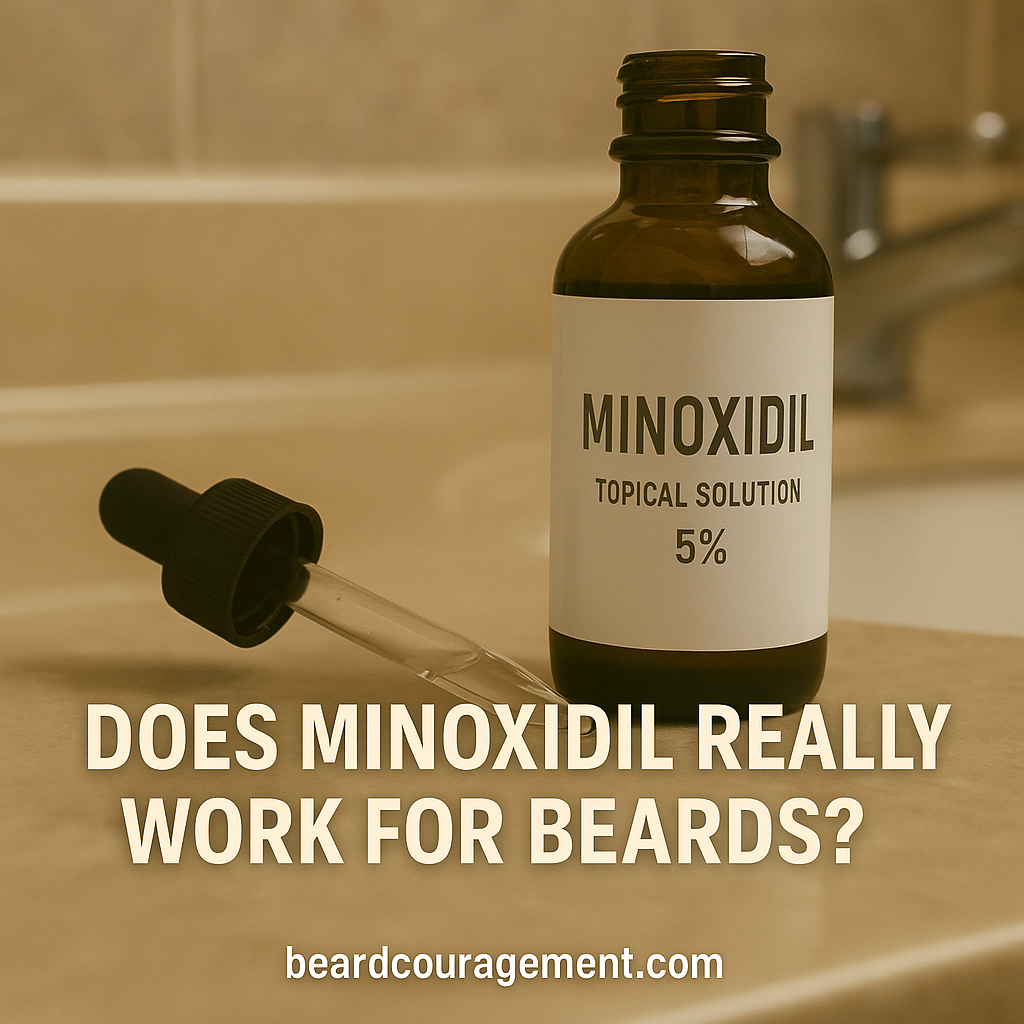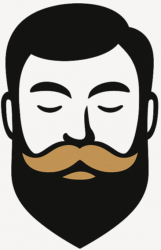
If you’ve ever searched for ways to fill in a patchy beard, chances are you’ve come across Minoxidil. Originally developed to treat scalp hair loss, Minoxidil has become one of the most talked-about beard growth solutions online. But does it actually work — or is it just another internet myth? Let’s take a closer look at what science and real results say.
What Is Minoxidil?
Minoxidil is a topical medication designed to stimulate hair follicles and increase blood flow to the application area. It’s most commonly known as the active ingredient in products like Rogaine. Over time, users began experimenting with applying it to their faces — and found that it could help promote beard growth, too.
How Minoxidil Works on Facial Hair
Unlike scalp hair, facial hair follicles are more influenced by hormones, especially testosterone and dihydrotestosterone (DHT). Minoxidil doesn’t alter hormone levels, but it does improve circulation to the follicles, delivering more oxygen and nutrients.
This process helps activate dormant follicles, resulting in new hair growth where your beard may have been thin or patchy. Over several months, many users notice thicker coverage and improved density.
The Science and Results
While Minoxidil isn’t officially approved for facial use, several studies and countless user reports suggest that it can be effective for beard growth.
- A 2016 study published in the Journal of Dermatology found that 5% Minoxidil significantly increased hair density when applied to the face.
- Consistent users often report visible improvements within 3–6 months, with maximum results around the one-year mark.
However, like any topical treatment, results vary. Genetics, age, and consistency all play major roles.
How to Use Minoxidil for Beard Growth
If you choose to use Minoxidil for your beard, here are some essential tips:
- Choose the Right Strength: Most people use the 5% solution or foam.
- Apply Once or Twice Daily: Use a small amount on clean, dry skin. Spread evenly across patchy areas.
- Wash After 4–6 Hours: To prevent residue buildup or dryness.
- Moisturize: Minoxidil can cause dryness or flaking, so follow up with a gentle moisturizer or beard oil.
- Stay Consistent: Missed applications can delay results. Patience and consistency are key.
Possible Side Effects
While generally safe, Minoxidil can cause:
- Dryness or itching on the applied area
- Shedding during early use (temporary)
- Mild redness or irritation for sensitive skin
Discontinue use if you experience persistent irritation or allergic reactions.
What Happens If You Stop Using It?
If you stop applying Minoxidil, the new hairs may gradually thin out over time. However, once vellus (soft) hairs become terminal (thicker and permanent), many users maintain their new growth even after discontinuation.
Final Thoughts
Yes — Minoxidil can work for beard growth for many men, but it’s not a miracle solution. It requires time, consistency, and patience. If you’re committed to your beard journey, it can be one of the most effective ways to encourage new growth and achieve the fuller beard you’ve always wanted.
